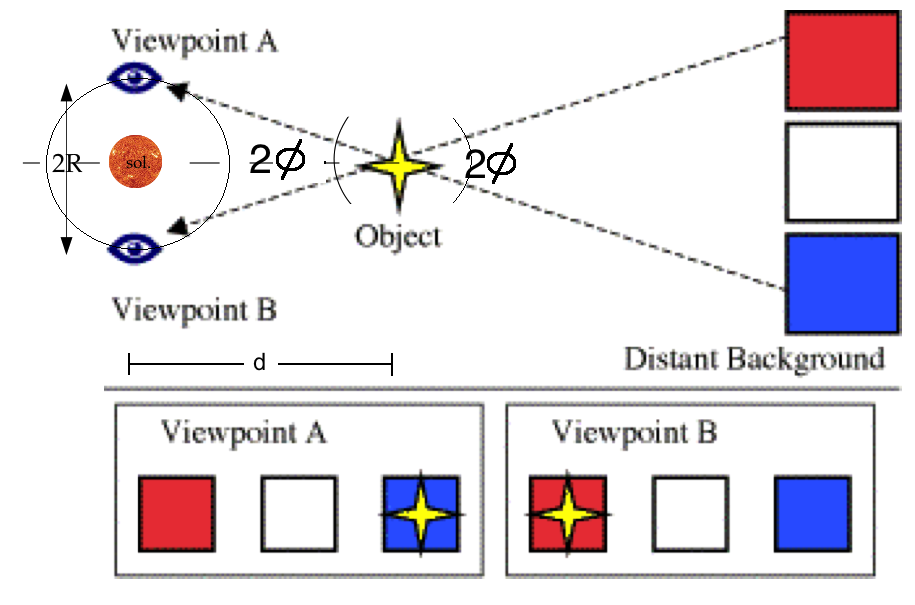

The total number of galaxies can then be determined statistically. All the galaxies in these volumes are classified and tallied. To determine the number of galaxies in superclusters, volumes in cubic megaparsecs (Mpc 3) are selected. The number of globular clusters, dust clouds, and interstellar gas is determined in a similar fashion. All the stars in these volumes are counted and the total number of stars statistically determined. To determine the number of stars in the Milky Way, volumes in cubic kiloparsecs (kpc 3) are selected in various directions. Astronomers typically express the distances between neighbouring galaxies and galaxy clusters in megaparsecs.

The angle SDE is one arcsecond ( 1 / 3600 of a degree) so by definition D is a point in space at a distance of one parsec from the Sun. Thus the distance ES is one astronomical unit (au). In the diagram above (not to scale), S represents the Sun, and E the Earth at one point in its orbit. Stellar parallax motion from annual parallax This corresponds to the small-angle definition of the parsec found in many contemporary astronomical references. In August 2015, the IAU passed Resolution B2, which, as part of the definition of a standardized absolute and apparent bolometric magnitude scale, mentioned an existing explicit definition of the parsec as exactly 648 000 / π astronomical units, or approximately 3.085 677 581 491 37 ×10 16 metres (based on the IAU 2012 exact SI definition of the astronomical unit). Although parsecs are used for the shorter distances within the Milky Way, multiples of parsecs are required for the larger scales in the universe, including kiloparsecs (kpc) for the more distant objects within and around the Milky Way, megaparsecs (Mpc) for mid-distance galaxies, and gigaparsecs (Gpc) for many quasars and the most distant galaxies. Partly for this reason, it is the unit preferred in astronomy and astrophysics, though the light-year remains prominent in popular science texts and common usage. Named as a portmanteau of the parallax of one arc second, it was defined to make calculations of astronomical distances from only their raw observational data quick and easy for astronomers. The parsec unit was probably first suggested in 1913 by the British astronomer Herbert Hall Turner.

A parsec is the distance from the Sun to an astronomical object that has a parallax angle of one arcsecond (not to scale)


 0 kommentar(er)
0 kommentar(er)
